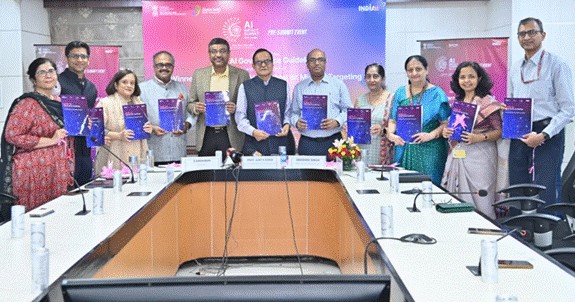Piyush Goyal Unveils Guidebook on HSN Code Mapping to Strengthen Trade, Policy and Manufacturing Ecosystem

Union Minister of Commerce and Industry Piyush Goyal releases the Guidebook on Mapping of Harmonized System of Nomenclature (HSN) Codes, in New Delhi on Saturday.
New Delhi, September 21: Union Minister of Commerce and Industry Piyush Goyal on Saturday released the Guidebook on Mapping of Harmonized System of Nomenclature (HSN) Codes, calling it a pivotal milestone in India’s journey towards Viksit Bharat@2047.
Prepared by the Department for Promotion of Industry and Internal Trade (DPIIT), the Guidebook allocates 12,167 HSN Codes across 31 Ministries and Departments, enabling sharper policy interventions, smoother regulatory processes, and more effective trade negotiations.
“This exercise will not only strengthen domestic production capacity but also ensure India negotiates trade agreements aligned with our economic priorities and domain strengths,” Goyal said while launching the Guidebook at the Celebrating 10 Years of Make in India and Discussion on Next Gen Reforms 2.0 event in New Delhi.
The Minister underlined that the Guidebook addresses a longstanding challenge: the absence of definitive custodianship of HSN Codes, which often left products misclassified as residuals. DPIIT’s effort included value-chain and use-case analyses, inter-ministerial consultations, and over 300 one-on-one meetings with industry stakeholders to ensure ground-level realities were reflected.
The Guidebook is structured around three operational pillars:
- Manufacture in India — aligning sectoral policies and strengthening value chains to position India as a global manufacturing hub.
- Strengthen Brand India — elevating the global reputation of ‘Made in India’ through quality enhancement.
- Make for the World — enabling Indian products to capture a larger share in global markets through effective trade negotiations.
Officials said the initiative will empower Ministries and Departments to translate policy intent into measurable outcomes, support ease of doing business, and foster a competitive manufacturing ecosystem.
Framing the initiative as more than a classification tool, Goyal described it as a “strategic instrument to align policy, investment, and trade for India’s industrial future,” adding that the Guidebook lays the groundwork for a robust, future-ready economy.








